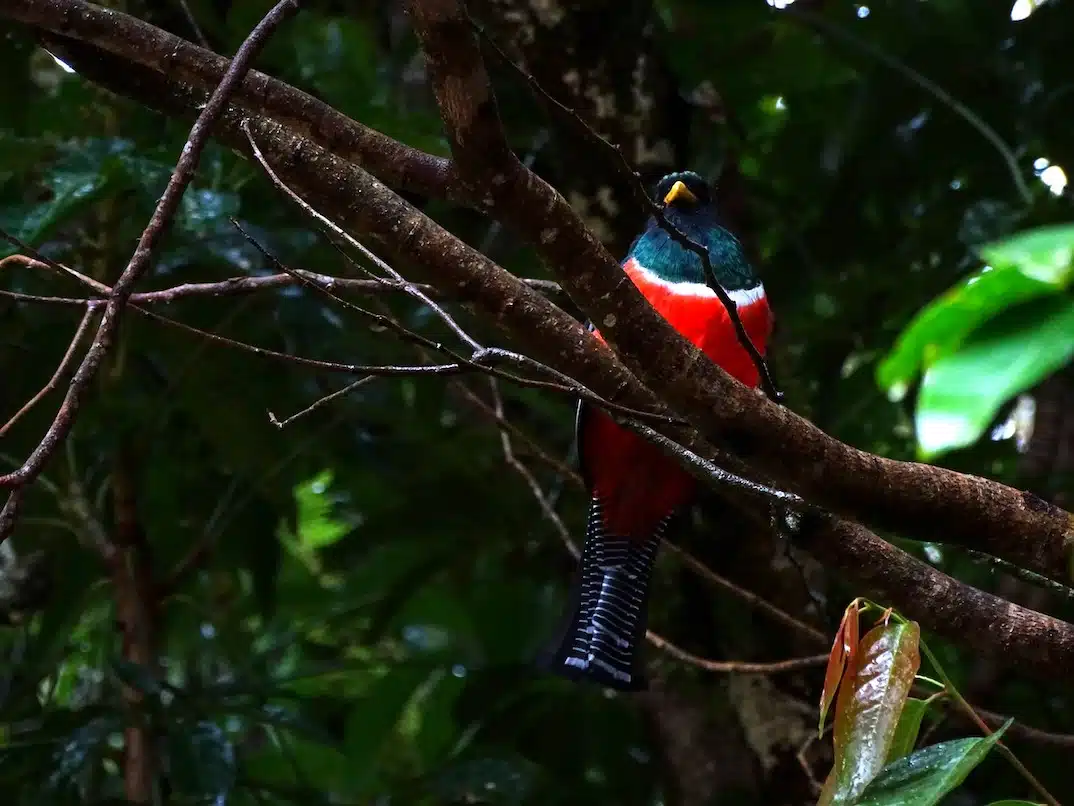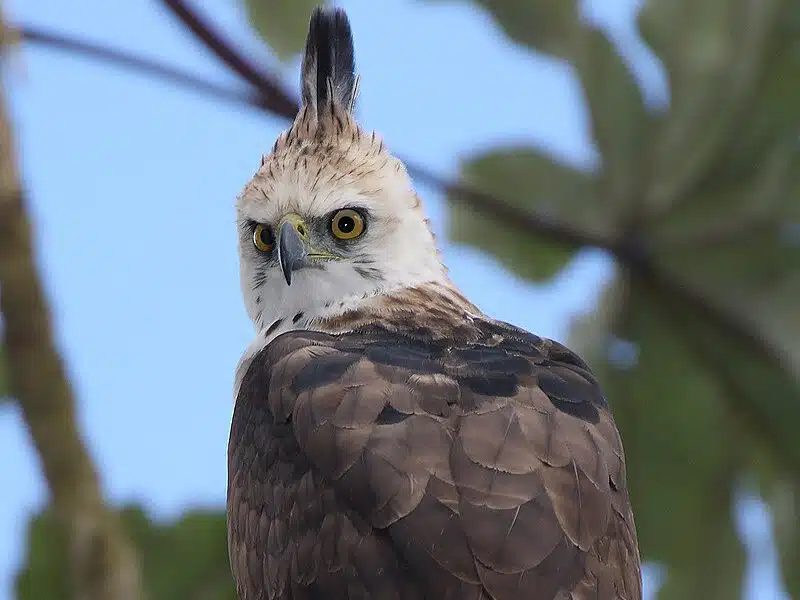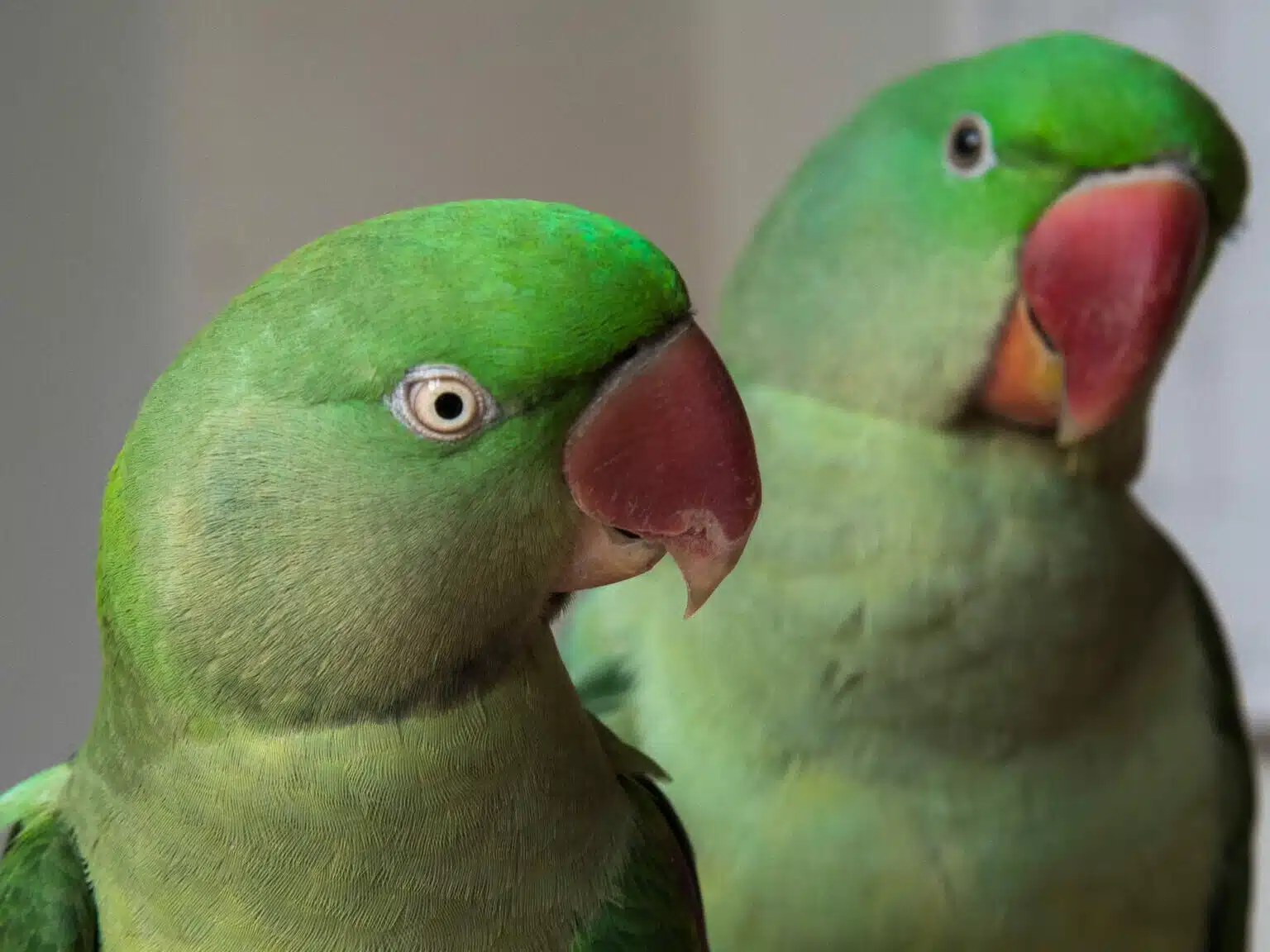Welcome to the National Bird of Haiti!
Haiti is an island nation in the Caribbean. It is known for its rich biodiversity. The mountainous terrain and diverse microclimates create a variety of habitats for a wide range of birds and animals. Unfortunately, many of these species are threatened by habitat destruction and hunting, and efforts are being made to protect them and their habitats.
The national bird of Haiti is a colorful cavity-nesting bird that is sadly threatened by the increasing loss of its habitat and the deterioration of its condition due to human activities. So let’s start with the article about the fantastic national bird of Haiti.
What is the National Bird of Haiti?

The Hispaniolan Trogon (Priotelus rosegaster) is the national bird of Haiti. It is a species of bird in the Trogonidae family. It is found only on the island of Hispaniola, which is shared by Haiti and the Dominican Republic. This colorful bird is a cavity-nester, often using cavities excavated by another island endemic, the Hispaniolan Woodpecker. Unfortunately, the species is threatened due to rampant habitat loss and degradation caused by logging, charcoal production and clearing for agriculture and settlement.
The Hispaniolan Trogon is known for its stunningly vibrant plumage. Its wings and breast are composed of a range of bright feathers, while its tail is distinctively patterned. The trogon family includes 40 species of birds found in tropical and subtropical regions of the Americas, Africa, and Asia.
The Hispaniolan Trogon is a medium-sized bird, ranging from 24-29 cm in length, with a wingspan of 36-41 cm. It’s beak is short and pointed, while its feet are short and strong. It is typically found in semi-open habitats such as shrubland and woodland, as well as in agricultural areas, where it feeds mainly on insects and small invertebrates. The Hispaniolan Trogon is a threatened species, due to loss of habitat, deforestation, and unsustainable hunting.
The Hispaniolan Trogon

Trogons are colorful birds characterized by their long, thin tails, small feet and short, thick bills. The Hispaniolan trogon has a metallic green upper body, gray throat and breast and a red belly. The tail of this species is usually distinctive, with the underside of the tail dark and each rectrix tipped with white. Males and females look similar, however the females lack white bars on their wing coverts and secondaries.
Trogons primarily inhabit subtropical or tropical moist montane forests. They are often found in dense rain, dry, pine and broadleaved deciduous forests. However they have also been seen in mangrove swamps. This species is threatened by habitat loss and is mostly confined to a few protected areas. It’s main altitude range is 500–3,000m, however they may migrate to lower elevations in the winter.
In Haiti it is restricted to the Massif de la Hotte and Chaîne de la Selle due to extensive habitat loss. However in the Dominican Republic it is still quite common, especially in the Sierra de Baoruco. To nest, trogons require large, old decayed trees with holes.
Does Haiti have a National Animal?
Yes, the national animal of Haiti is the Hispaniolan Trogon. It is a species of bird in the Trogonidae family and is endemic to the island of Hispaniola, which is shared by Haiti and the Dominican Republic.
It is the national bird of Haiti, and its populations are threatened since the undisturbed forests that it inhabits are being destroyed. Conservation efforts are underway to help protect the Trogon and its habitat.
Does Haiti have Eagles?

Yes, Haiti has eagles. The Hispaniolan Ornate Hawk-Eagle (Spizaetus ornatus) is an endemic species of eagle found in Haiti. It is a medium-sized raptor, with a wingspan of up to 1.2 meters and a body length of up to 70 centimeters.
This species of eagle is found mainly in montane and submontane forests. It feeds mainly on small mammals and birds. Regrettably, the Bonelli’s Eagle is threatened on Hispaniola by deforestation and hunting. Consequently, it is listed as endangered on the IUCN Red List of Threatened Species. Efforts are underway to protect this species and its habitat. For instance, tracking black-capped petrels by satellite and improving habitat protection in the Dominican Republic.
What are the Parrots of Haiti?

The parrots of Haiti include the Hispaniolan Parakeet (Psittacara chloropterus), Hispaniolan Amazon (Amazona ventralis), Hispaniolan Palm Crow (Palmopsittaca hispaniolensis) and the Hispaniolan Parrot (Amazona imperialis). A species of parrot in the Psittacidae family is the Hispaniola parakeet, which occurs only on the island of Hispaniola. The Hispaniolan Amazon is a species of parrot in the Psittacidae family, colloquially known as a “cuca”. While the Hispaniolan Palm Crow is a species of parrot in the Psittacidae family, it is endemic to Hispaniola.
The Hispaniolan Parrot is a species of Amazon parrot in the family Psittacidae, endemic to Hispaniola. All of these parrots are threatened by habitat destruction and hunting and conservation efforts are being made to help protect them and their habitats.
Summary
The Hispaniolan Trogon is the national bird of Haiti, found only on the island of Hispaniola. This bird species is threatened by human activities such as logging, charcoal production, and clearing for agriculture and settlements. Efforts are underway to protect the trogon and its habitat. For example, tracking black-capped petrels by satellite and improving habitat protection in the Dominican Republic.
Article: National Bird of Haiti! Here you can find more blogs about Haiti or maybe the The national animal of El Salvador is interesting for you!
- Bryce Canyon vs Yosemite - January 26, 2023
- National Bird of Haiti - January 10, 2023
- Top 10 Best Places to Visit in Mexico City - August 4, 2022

